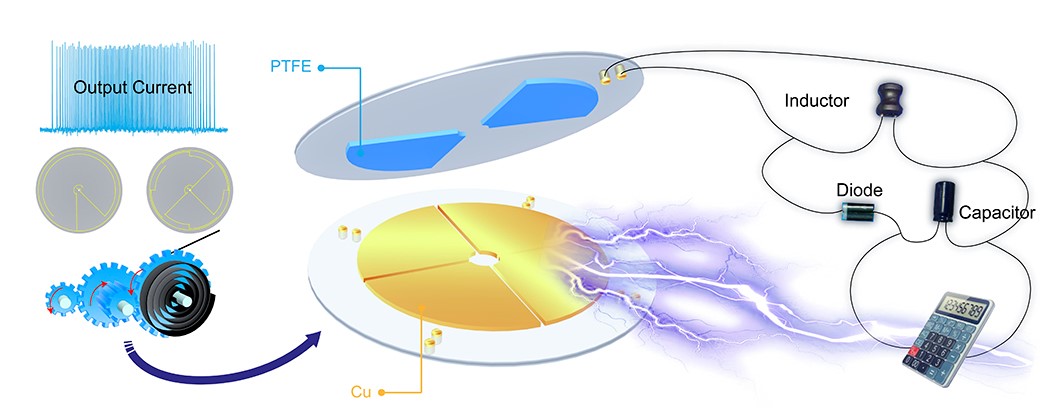Recently, the research result of Prof. Gang Cheng's group " Rotational pulsed triboelectric nanogenerators integrated with synchronously triggered mechanical switches for high efficiency self-powered systems " was published in the famous international journal Nano Energy (IF=16.602, JCR District 1).
Article link: https://doi.org/10.1016/j.nanoen.2020.105725
The development of IoTs requires billions of sensors, which need to be properly powered by suitable and sustainable power sources. By harvesting mechanical energy from the environment and converting it into electricity, triboelectric nanogenerators (TENGs) were utilized to develop self-powered systems for sensors. However, conventional TENGs have high open-circuit voltage, low short-circuit current, therefore, suitable power management circuits are required to convert the output of TENGs into forms with stable low voltage and high current. However, the internal equivalent impedance of conventional TENGs (1-100 MΩ) is much higher than that of the power management circuits (less than 1 kΩ), leading to most of the output energy of TENGs cannot be transferred into power management circuits. In previous works, our research group developed pulsed TENG (Pulsed-TENG) by introducing a synchronously triggered mechanical switch (STMS). The introduction of STMS reduces the internal equivalent impedance of TENG and maximizes the output energy. However, due to the difficulty in developing a suitable STMS, there are few reports on rotational Pulsed-TENGs. Compared with other working modes, rotational TENG has higher output performance, stability and durability. Therefore, the realization of rotational Pulsed-TENG is of great significance to the development of self-powered systems.

Figure Self-powered system based on RF-Pulsed-TENG.
In this work, we reported the rotating freestanding triboelectric-layer Pulsed-TENGs (RF-Pulsed-TENGs) based on integrated STMSs. Through the printed circuit board (PCB) process, the electrode layer and mechanical trigger switch of TENG were prepared in one step, which simplified the preparation of TENG and improved its stability and durability. Since the on-off states of the STMSs can match well with the rotation frequency, the output voltage and energy of the RF-Pulsed-TENGs are maximized regardless of the rotation frequency or load resistance. Through rational design, both alternating current (AC) and unidirectional current (UDC) output RF-Pulsed-TENGs have been realized, and the energy storage efficiency of their corresponding passive power management circuits can reach 51.6% and 52.0%, respectively. Combined with gear box and efficient passive power management circuit, the RF-Pulsed-TENG showed the advantage in efficient mechanical energy collection and storage in real environment, and can be used to power a series of electronic devices, including calculators, electronic watch, and temperature and humidity meter, etc., showing promising applications in self-powered sensors based on TENG.
PhD student Wanyu Shang and Dr. Guangqin Gu are the co-first authors of the paper, and Prof. Gang Cheng and Prof. Zuliang Du are the co-corresponding authors of this paper. This work was supported by funding from the National Natural Science Foundation of China, China Postdoctoral Science Foundation, Key Research & Development and Promotion Project of Henan Province and the Science and Technology Department of Henan Province and Henan University.